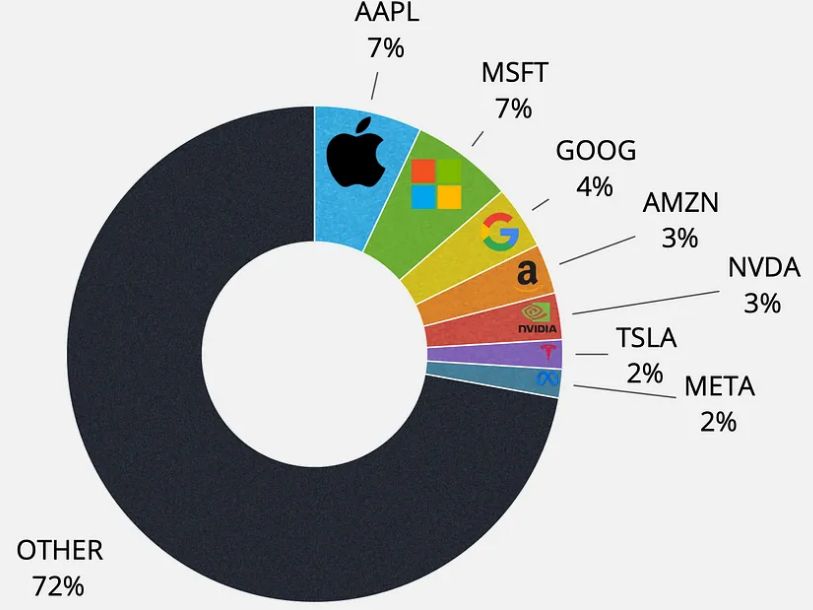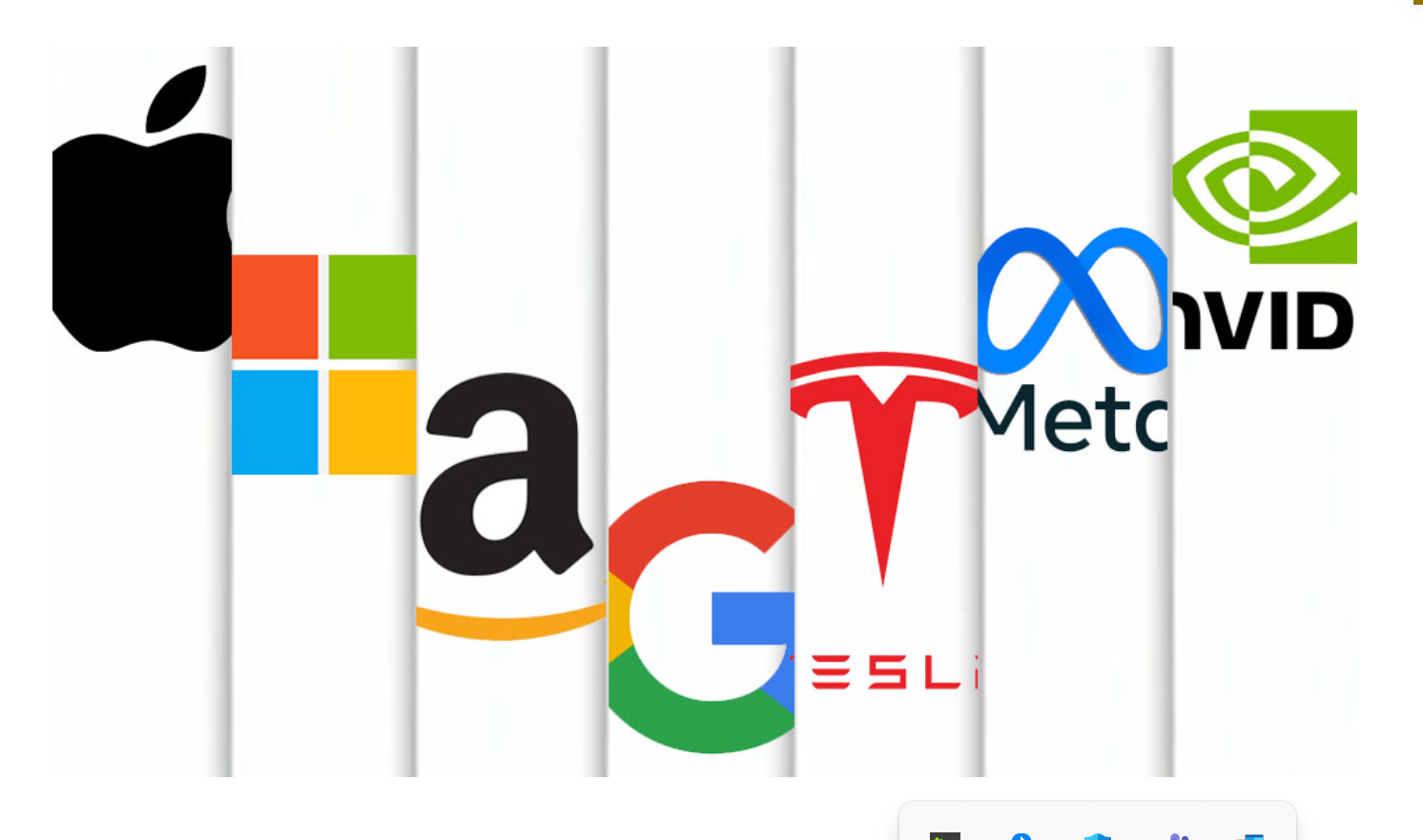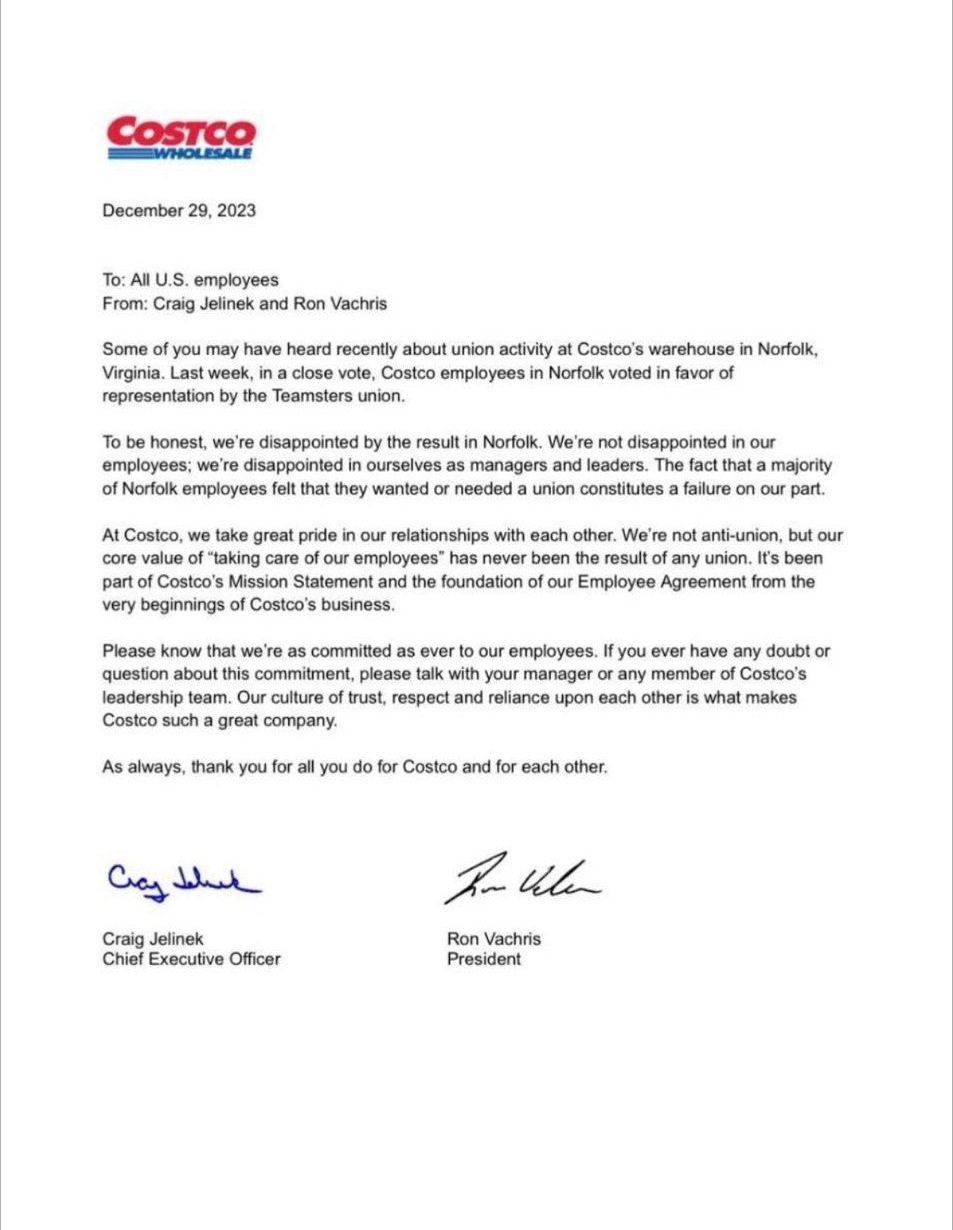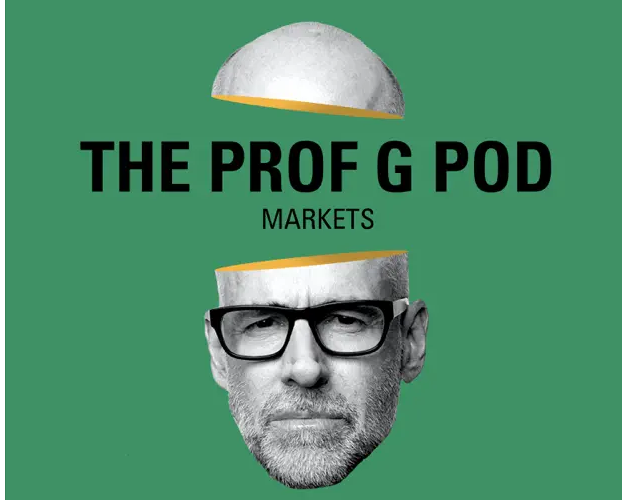Soccer Players "Walking Off" After Racist Comments
Not a sports watcher, I’m fascinated reading how soccer players handle racist comments during the game. Some players are walking off the field amid calls for greater penalties.
A writer for The Athletic explains what led to the AC Milan (the football team) to walk off:
[Mike] Maignan led his AC Milan teammates off the pitch at Udinese on Saturday after being racially abused twice from the stands. [Kasey] Palmer was racially abused by a Sheffield Wednesday fan towards the end of Coventry City’s 2-1 win at Hillsborough.
AC Milan posted support on X: “There is absolutely no place in our game for racism: we are appalled. We are with you, Mike. #WeRespAct”
Of his experience, Palmer said, “I’m black and proud, and I am raising my three kids to be the exact same. I’ll be honest, it feels like things will never change, no matter how hard we try,” and “Couple fans doing monkey chants don’t define a fanbase. I appreciate all the love and support I’ve received.”
Maignan called on authorities to do more. He also posted these thoughts on X:
It was not the player who was attacked. It's the man. He's the father of the family. This isn't the first time this has happened to me. And I'm not the first this has happened to. We issued press releases, advertising campaigns, protocols and nothing has changed. Today, an entire system must take responsibility. . . .
The FIFA president made a statement condemning racism, including, “No to racism! No to any form of discrimination!” But many are calling for harsher punishments in addition to the current process:
FIFA’s guidance follows a “three-step” policy: at the first incident of racism, the referee should report it to the “home club safety officer via the fourth official”; at the second, the referee may suspend the match “allowing the safety officer and police to deal with the perpetrators”; it’s only at the third incident that the referee is empowered to abandon the match.
As we can expect, not everyone agrees, with some calling for players to do the equivalent of “man up” but with more literal expressions I had to look up and won’t write. Students could weigh in on this situation, and a discussion could lead to, but doesn’t have to, what’s acceptable on college campuses.
This situation raises issues of integrity for the league. A writer for The Athletic says of FIFA’s president, “Now it’s time for him to follow up his words with action.” This is a call for words and deeds to match, or for consistency, a key component of integrity.
The Visual Pull of Tech Stocks
Line charts show how the “Magnificent Seven” tech stocks—Alphabet, Amazon, Apple, Meta, Microsoft, Nvidia, and Tesla—affect the S&P 500. Students can analyze the potential audience and objective of each of these visual displays, find others, or create their own. Hover over for comments about each, and click on the slide for the original source. The data represents different timeframes, so the charts aren’t quite comparable.







Students also might be interested in evaluating whether Tesla should remain part of the Magnificent Seven. Some believe it’s lackluster performance makes it unworthy of the designation.
Niecy Nash Thanks Herself in an Emotional Speech
The Emmy award audience and viewers love watching emotional speeches. Niecy Nash thanked herself in her acceptance speech, which students can analyze, given the context.
Nominated for five Emmys for her work in 2023, Nash won for Outstanding Supporting Actress in a Limited or Anthology Series or Movie for Dahmer—Monster: The Jeffrey Dahmer Story. When we assess character, particularly an aspect of character like humility, we consider the entire context. Nash is crying as she begins her speech, saying, “I’m a winner, baby!” She was nominated for several Emmy awards over the years and won the last one in 2010. It’s been a while.
During her interview with Gayle King and Charles Barkley on CBS, she got emotional describing the work it took for her to be successful and how she felt proud of herself. Her difficulty is clear from her speech, too, when she thanks her “better half, who picked me up when I was gutted from this work. Thank you.” Then she says, “And you know who else I want to thank? I want to thank me.” She describes believing in herself and closes by acknowledging Black and brown women who went “unheard but over policed.” She mentions a few by name.
The context of her speech also is the historic underrepresentation of women of color in film, in TV, and as entertainment award winners. Humility can be defined as being neither below or above others. Nash expresses gratitude for being at a high competitive level and for being rewarded as she deserves to be. From another actor, the speech could certainly sound arrogant. But hers is taken well, and we see the audience enthusiastically applauding her.
China Changes Youth Unemployment Measure
After a five-month lapse, China reported youth unemployment data, which looks better because of new metrics. The change raises questions about data integrity and reporting.
According to China’s National Bureau of Statistics, the unemployment rate of people between 16 and 24 years old dropped from a high of 23.1 in June to 14.9 in December. But the rate doesn’t mean more young people are employed. The Bureau now excludes students enrolled in school, even if they’re seeking part-time employment. Reports also will now separate people between 25 and 29 from those between 25 and 59. A record number of college graduates are having a particularly difficult time finding jobs, partly because of restrictions on tech, real estate development, and education fields and because of a slow recovery from the pandemic, which Chinese officials seem reluctant to admit.
The youth data change might not have been as alarming if China hadn’t stopped reported data after that record high in June.
Students might discuss the significance of these changes and compare how China reports jobless data to U.S. methodology (see U.S. Bureau of Labor Statistics). This situation is a good project for students to dig into the data and also analyze, for example, differences between urban and overall rates.
Students also can find or create charts to visualize the change over time. They’ll likely find mostly line charts like the one at right that shows the urban rate over the past two years. As many do, this chart has a truncated Y axis, exaggerating the differences (and yet, one percentage point is a lot of people out of work).
Jelly Roll Speaks Out and Demonstrates Character
Not often do we see a rapper turned country music artist in front of congress. Students might be interested in discussing Jelly Roll’s character and analyzing his persuasive statement.
With a history of addiction, selling drugs, and jail time, Jelly Roll is open about his past. His hit “Save Me” (and others), his inspiring speech when he won the Country Music Award for New Artist of the Year, and his tearful video when he learned he received two Emmy nominations demonstrate his vulnerability and gratitude for his new life. We learn more about Jelly Roll during a CBS Sunday Morning interview, when he talks about being in therapy and says, “I think it’s cool to think about vulnerability that way—that we can all grow together, and that it’s OK to not have it figured out. . . .” Correspondent Kelefa Sanneh also noted his authenticity, among other character dimensions: “Songs like ‘Song of a Sinner’ and ‘Need a Favor’ make fans feel as if they really know him and believe in him.”
In his testimony to encourage lawmakers to pass a bill to sanction drug traffickers, Jelly Roll uses several persuasion strategies we teach in business communication classes. With a tattooed face, Jelly Roll started with a joke about having a microphone for performing. Then he captures attention with data about the number of people who will die from drug overdose during his five-minute testimony. He uses other logical appeals, including this poignant analogy about the average number of people who die every day in the United States of fentanyl overdose:
Could you imagine the national media attention it would get if they were reporting that a plane was crashing every single day and killing 190 people?
Students may have a lot to say about the speech, which demonstrates credibility, logical argument, and emotion appeal. In some respects, he risks little. He is vulnerable, speaking of his wife’s addiction and a past he might prefer to forget, but his advocacy is unlikely to affect his career negatively: he’s getting positive publicity and his role might endear people toward him. Still, he demonstrates integrity by being consistent in his music and in his life. He is making “living amends,” as people do in Twelve Step programs: taking positive steps when apologies aren’t possible or enough.
Disclosing an Illness
Defense Secretary Lloyd J. Austin III delayed telling the White House about his prostate cancer, which raises questions about whether or when a corporate executive should disclose an illness.
At a news conference on January 9, Pentagon Press Secretary Gen. Patrick Ryder apologized for failing to notify proper channels when Austin was hospitalized:
I recognized that I should have tried to learn more and to press for an earlier public acknowledgement. So I want to offer my apologies and my pledge to learn from this experience. And I will do everything I can to meet the standard that you expect from us.
He also said, “Secretary Austin has taken responsibility for the issues with transparency.”
Leaders might naturally avoid disclosing an illness. A palliative care doctor said, “It’s very human to not want to have yourself sort of flayed open for the world to see.” He’s describing vulnerability, or emotional exposure. Others say it’s a coping mechanism, trying to control the uncontrollable. Compartmentalization—to a point—is a useful way to deal with a diagnosis. But experts warn that being too secretive can lead to isolation and may not get people the help they need.
Austin’s situation reminds me of others who have disclosed illnesses for good reasons. Alex Trebek, long-time Jeopardy! host announced is illness on air. He described his rationale for the message about his stage 4 pancreatic cancer diagnosis: to be “open and transparent” and to avoid “overblown or inaccurate reports.” His diagnosis has a particularly low survival rate, so the decision might have been easier for him, as he accepted his likely death. For different reasons, Senator John Fetterman revealed his mental health struggles, which was lauded as courageous and a way to normalize depression.
For corporate CEOs, the decision to disclose health issues is complicated because of the potential impact on customer, employee, or investor confidence. Famously, Steve Jobs downplayed and delayed disclosing his pancreatic cancer and other health issues, which was highly criticized for its impact on, for example, investor decision making, and was a troubling situation for some board members.
According to this Harvard Law article, “Best Practices for Disclosing Executive Health Issues,” the obligation for public disclosure is limited:
If a senior executive is incapacitated and therefore unable to perform his or her duties, disclosure is required (particularly if the executive performs certain roles [9] or is otherwise reasonably believed to be critical to the success of the company).
In addition to reviewing the risks and approaches, including a communication plan, the article authors provide examples of companies that gave full disclosures, mixed disclosures, and “The Silent Treatment.” They conclude: “Most risk arises from partial disclosures or “half-truths”—which should be avoided. Sometimes silence with respect to executive health is the best policy.” Maybe, but I’ll also quote a university communication executive: “The trust will come out.”
Corporate executives have difficult choices in these situations. In this case, Austin didn’t really have a decision to make: he should have followed protocol and did not.
Costco Accepts the Union with Humility
In a great display of humility, Costco management wrote to employees about the new union—a good, positive message to share with students. The CEO and president co-signed the letter to acknowledge the union and reinforce their values, which, they admit, may not have been upheld:
[W]e’re disappointed in ourselves as managers and leaders. The fact that the majority of Norfolk employees felt that they wanted or needed a union constitutes a failure on our part.
The Costco leaders made a good choice if for no other reason that the vote is done, so they might as well accept it. Also, they’re right about the reason for all union activity: employees aren’t getting what they want or need from management and seek outside help.
But few leaders admit this. Starbucks and Amazon, in particular, fought union activity to the extent that the National Labor Relations Board accused Starbucks of interfering with employees’ rights and Amazon of not bargaining in good faith.
Microsoft hasn’t been entirely antagonistic against union activity. After acquiring Activision Blizzard last year, it entered into a neutrality agreement with the Communications Workers of America. This meant that employees were free to choose a union without management’s interference (although that is the law). Employees did vote for the union, Microsoft’s first in the United States, and a spokesperson commented:
In light of the results of the recent unionization vote, we recognize the Communications Workers of America (CWA) as the bargaining representative for the Quality Assurance employees at ZeniMax. We look forward to engaging in good-faith negotiations as we work towards a collective bargaining agreement.
A tech writer made a good point about who defines “good faith.” In response to a similar (but more defensive) Apple statement about its union, he wrote:
To some extent, it could be said that Apple now has a spotlight on its actions at the negotiations—whether it meets the union on the union’s definition of good faith negotiations, or whether it continues to stand on its own record of positive remuneration in spite of the union’s negotiating position.
We’ll see more company responses as union activity gains speed for the first time in decades, particularly in tech and retail industries.
Boeing Crisis Comms Need Work
Once again, Boeing is in crisis communication mode trying to explain plane failures. Messaging could sound more authentic and compassionate.
After part of the fuselage fell off an Alaska Airlines Boeing 737 Max 9 plane, United found loose bolts needing “additional tightening” on the same model. In a flashback to the horrible deaths caused by MAX planes five years ago, the FAA grounded 171 of the planes.
On its website, Boeing lists daily “Updates,” but none of them acknowledge the fear (and of course, the inconvenience) to passengers. The audience for these messages is the public, and communications to passengers seem to be missing. One update restates what CEO Dave Calhoun said in a company-wide meeting to employees:
When it comes to the safety of our products and services, every decision and every action matters. And when serious accidents like this occur, it is critical for us to work transparently with our customers and regulators to understand and address the causes of the event, and to ensure they don’t happen again. This is and must be the focus of our team right now. I am deeply grateful to our colleagues who have been working tirelessly on our company’s response over the past two days.
We will spend time together Tuesday talking about our company’s response to this accident, and reinforcing our focus on and our commitment to safety, quality, integrity and transparency. While we’ve made progress in strengthening our safety management and quality control systems and processes in the last few years, situations like this are a reminder that we must remain focused on continuing to improve every day.
On January 9, a video of Calhoun talking with employees was posted on the site. In this message, he found some emotion, referring to the shocking pictures, which reminded him that he’s a parent and grandparent. His delivery style is natural, but much of the message sounded canned. Imagine if he said “honesty,” instead of “transparency,” which he announced like a section heading:
[Honesty.] Let me talk a little bit about what I did today and what I’ll keep doing with members of our team who are with us today. We’re going to approach this, number one, acknowledging our mistake. We are going to approach it with 100% in complete [honesty] every step of the way.”
Transparency seems best achieved through actions rather than promises—like safety.
Unfortunately for Boeing, other media sources aren’t reflecting well on the company. Several passenger TikTok videos show the missing part of the plane. (Passengers are uncharacteristically calm, perhaps because this is one of those situations when they have absolutely no control and no choice but to surrender.) A former employee whistleblower told CNBC, “It really wasn’t a surprise, sadly.”
In a CNBC interview, Corporate Communication Professor Paul Argenti criticized Boeing’s “focus on profits rather than safety, and you need to do both.” He encouraged a greater sense of urgency in [CEO Dave] Calhoun’s response: “I don’t see him saying the kinds of things that would give me confidence in the organization.” Argenti said that we need to know what went wrong and what the company will do to fix it, and “They need somebody new. . . a hero to come in and save this company.” The former CEO also struggled with communication.
Air Alaska showed a bit more compassion towards customers on the flight, but it’s at the end of the statement:
A statement from Alaska Airlines CEO, Ben Minicucci:
At Alaska Airlines, safety is our foundational value and the most important thing we focus on every day. Following tonight’s event on Flight 1282, we have decided to take the precautionary step of temporarily grounding our fleet of 65 Boeing 737-9 aircraft. Each aircraft will be returned to service only after completion of full maintenance and safety inspections. We anticipate all inspections will be completed in the next few days.
I am personally committed to doing everything we can to conduct this review in a timely and transparent way.
We are working with Boeing and regulators to understand what occurred tonight, and will share updates as more information is available. The NTSB is investigating this event and we will fully support their investigation.
My heart goes out to those who were on this flight – I am so sorry for what you experienced. I am so grateful for the response of our pilots and flight attendants. We have teams on the ground in Portland assisting passengers and are working to support guests who are traveling in the days ahead.
-Ben
FAFSA and Other Form Problems
A parent describes his experience completing the “simplified” Free Application for Federal Student Aid (FAFSA), which was supposed to be easier than the old college financial aid form but still illustrates business communication problems.
The parent received only intermittent access a couple of months after the form was planned to be available. He complimented the clean design, friendly user interface, and fewer questions than on past forms. The biggest issues seems to be that the promised “soft launch” was half-baked—too late, not consistently available, and buggy. He suggested waiting until next year, when it could be fully available in the summer to give families more time.
The Federal Student Aid department’s launch announcement warns people not to “fill out the form immediately when the soft launch period opens” and includes a long list of potential problems. So the reporter might have headed the advice.
Form changes are guided by the FAFSA Simplification Act, which the U.S. Department of Education explains in a message to an unclear audience. The process introduces a new acronym (SAI), and the message is repetitive and includes information that possibly no audience would find useful, for example,
This data exchange has been made possible by the Fostering Undergraduate Talent by Unlocking Resources for Education Act (FUTURE Act), which we’ll implement alongside FAFSA simplification starting with the 2024–25 award year.
Students might rewrite this message to an audience of students and their parents, explaining just a little of the rationale for the changes but focusing primarily on the benefits and what to expect. To the department’s credit, a virtual assistant is offered with links to other pages. Students also could analyze communications on this page, whose audience is more clearly parents and students. But I find the video slow and devoid of information.
Communication Issues Around Harvard President Resignation
Harvard President Claudine Gay resigned after weeks of pressure and speculation. The communication issues around this situation are too weighty to properly cover in one blog post. But here are a few angles if faculty want to venture into the topic with students.
Bill Ackman’s calls for Gay’s resignation were the most fierce, and his antagonism started before October 7. His long, celebratory post provides his version of Harvard’s failings, including its DEI programs, and suggests that the entire Board resign. We see his business perspective, comparing university growth to business standards. He also writes, “I would suggest that universities should broaden their searches to include capable business people for the role of president.” I don’t categorically disagree, but I wonder whether he has anyone in mind.
Gay’s resignation letter is short and polite. She shares “Personal News” and closes with a forward-looking sentiment:
“As we welcome a new year and a new semester, I hope we can all look forward to brighter days. Sad as I am to be sending this message, my hopes for Harvard remain undimmed. When my brief presidency is remembered, I hope it will be seen as a moment of reawakening to the importance of striving to find our common humanity—and of not allowing rancor and vituperation to undermine the vital process of education. I trust we will all find ways, in this time of intense challenge and controversy, to recommit ourselves to the excellence, the openness, and the independence that are crucial to what our university stands for—and to our capacity to serve the world.”
The Corporation’s letter is similarly diplomatic, thanking Gay for her “deep and unwavering commitment to Harvard and to the pursuit of academic excellence.” They criticized her attackers:
“We do so with sorrow. While President Gay has acknowledged missteps and has taken responsibility for them, it is also true that she has shown remarkable resilience in the face of deeply personal and sustained attacks. While some of this has played out in the public domain, much of it has taken the form of repugnant and in some cases racist vitriol directed at her through disgraceful emails and phone calls. We condemn such attacks in the strongest possible terms.”
Al Sharpton is one of many who also defended Gay and criticized Ackman directly, announcing a protest outside his office. He blamed racism: “This is an attack on every Black woman in this country who’s put a crack in the glass ceiling. It’s an assault on the health, strength, and future of diversity, equity, and inclusion . . .”
Gay’s opinion essay in the New York Times describes racist attacks against her and the bigger picture of her experience. She defends her scholarship, emphasizing that her research and the contribution of her work were never at question. She discusses courage, a character dimension worth talking with students about in their own communication.
Gay’s plagiarism might deserve class attention. Examples of minimally rewritten passages in her work could serve as a teaching tool about standards for business communication and other students. This might also serve as an opportunity to put the criticism in context, as she does herself in the NYT piece.
How to Spot a Fake Review
Fake online reviews are unfair to competitors and can cause bad purchase decisions. Students benefit from knowing how to spot these reviews, and the topic raises bigger questions about integrity.
People depend on online reviews for purchase decisions, but 30-40% of reviews are considered unreliable. A CNBC article suggests ways to avoid being duped:
Beware of five-star reviews, particularly without text or right after a negative review appears.
Check reviewers who have locked profiles, post only one time, use a stock photo, or post about businesses in multiple countries.
Don’t be fooled by detailed reviews with photos, which can still be fake.
Other sources suggest evaluating the writing:
Repeated mentions of the product or brand name
Language you would see in an ad or press release
Unnatural language (for example, “robust wireless data transmission”)
But some of these strategies require digging and might not be practical for someone perusing Airbnb or looking for a mop. Some research found that language models do a better job than humans in detecting fake reviews, so that might be the best defense.
One tool, Fakespot, a browser add-on, promises to flag fake reviews on Amazon and other sites using AI technology. The Hopeless Geek analyzes tech products and gave Fakespot a mixed review. His point is that the program analyzes reviews, not products. For example, Samsung was flagged as possibly being "deceptive,” but Geek argues the conclusion is based on how the reviews are written. Amazon also protested Fakespot and convinced Apple to remove the app, which it claimed was wrong about products 80% of the time.
Fakespot warns us about the integrity of fake reviews while developing its own credibility as an app. The website uses several strategies that students would recognize to demonstrate ethos; for example, we see “trust” and “truth” several times, reputable company logos (those the app covers and news articles about the app), and testimonials. The site also uses social proof (“millions of consumers like you”) to convince us to install the add-on.
Spotting fake reviews is complicated. If ChatGPT writes a review for someone feeding it the information, is it fake? In a letter, US Public Interest Resource Group (PIRG) encourages the U.S. Federal Trade Commission (FTC) to do more to investigate and monitor websites. Complicated problems require multiple solutions—beyond what individual users can do.
New Slack CEO's Message to Staff
A friend suggested I post more positive examples, and I’m glad for the challenge. If you find others, please send them along. This one appeared on LinkedIn from Slack’s new CEO Denise Holland Dresser as a summary of “what’s top of mind.”
With cute but tasteful emojis, Dresser writes about her gratitude for the team, productivity tools of the platform, happy customers, work efficiencies, and the future. Yes, it’s a feel-good, promotional message, but Dresser is concise and grounded. Her personality comes through just enough, without spilling over the screen. Her subheadings aren’t quite parallel, but I’m picky. Students benefit from seeing examples of positive messages, and this is a good one to share.
Dresser left Salesforce in November, along with several other departing executives and laid off employees in the past year. Slack, too, has had its share of turnover: Dresser will be the third CEO in about a year. But none of that matters now. Dresser is all-in at Slack or, at least, that’s what her message says.
Hasan Minhaj Defends Embellishing Stand-Up Comedy
The comedian Hasan Minhaj isn’t cowering after a New Yorker reporter fact checked and criticized his Netflix series Patriot Act and other performances. His response is an unusual approach for crisis communication. Students might discuss issues of integrity and analyze evidence in this situation.
In her article, “Hasan Minhaj’s ‘Emotional Truths’,” Clare Malone wrote,
[A]fter many weeks of trying, I had been unable to confirm some of the stories that he had told onstage. . . . Still, he said that he stood by his work. “Every story in my style is built around a seed of truth,” he said. “My comedy Arnold Palmer is seventy per cent emotional truth—this happened—and then thirty per cent hyperbole, exaggeration, fiction.”
In part, Malone’s focus was on the consequences of Minhaj’s fabrications (he might say “embellishments”). When comparing his stories to George Santos’s, Minhaj says Santos’s are "pointless,” whereas his have societal value, which gives him moral standing. Students can discuss how much is too much “stretching the truth.” How might standards of integrity differ for comedians, politicians, organizational leaders, entrepreneurs, job applicants, etc.?
People make difficult decisions about whether and how to respond to criticism. Minhaj fought back. A New York Times writer summarizes Minhaj’s response well:
Typical crisis management dictates you should move on, not fixate. But in our attention economy, where the most popular Netflix specials of the past year featured Chris Rock talking about the Slap and John Mulaney joking about going to rehab, comedians are wise to consider Rahm Emanuel’s famous political advice: Never let a good crisis go to waste. Minhaj split the difference. He did not linger on the story but dedicated a solid chunk of jokes to it that got one of the biggest responses of the night. There were moments when I even thought this scandal might be the best thing that ever happened to him.
During a recent Beacon Theater show, Minhaj quipped to the audience, “Don’t fact check me.” He said of the New Yorker report, “I got caught embellishing for dramatic effect,” and said it was too bad it was such “a dorky scandal” and not one involving, for example, child abuse.
In a 21-minute video watched, so far, 1.9 million times, Minhaj addressed criticism head-on, showing headlines and a Bill Maher clip. He apologized to those hurt by his routines and addressed three stories in detail. He distinguished between what really happened and how he changed details to create a funny/poignant story. Supporting his points, Minhaj played audio from the interview with the New Yorker reporter. As he acknowledges during the video, his explanations are a bit much (saying at one point, “If you’re still here,” and, I admit, I dropped off soon after). But he does provide good evidence of the reporter ignoring or missing information. (For a deep dive of disputed facts, read this Slate analysis.) Naturally, Malone posted a short statement on X, defending her reporting.
To his credit, Minhaj has enough perspective to conclude with a main point (direct organization plan—up front!): he didn’t “fake racism.” Students can draw their own conclusions and whether they are convinced by Minhaj’s presentation of the evidence.
This situation gives students a different perspective on crisis communications. Minhaj highlighted rather than downplayed criticism, which may have avoided his getting “cancelled” and might even elevate his reputation.
CMU's Response to Antisemitism Lawsuit
A Carnegie Mellon University graduate student of architecture filed a lawsuit alleging antisemitism, and the university’s response could be improved. The federal complaint describes incidents since 2018, including a professor’s actions and comments to the student and the student’s reports to the DEI office and the Title IX office, which she says discouraged her from filing a formal complaint.
The university’s response sounds like ChatGPT wrote it. The president uses well-worn phrases for these types of statements, as if they were pulled from those who had faced similar situations, regardless of whether the response was well received or ethical. The most glaring sentence is, “We take these allegations very seriously, are reviewing them closely and plan to respond appropriately.” Of course they do and they will. This is no great statement of accountability: the university has little choice after receiving a federal complaint.
“Values” appears three times in the short statement, the last one linking to the university’s “shared values” that no one but me will read. If they did, they would see that all eight values could appear on any university’s website—or that of most for-profit, non-profit, or governmental organizations.
I am sympathetic. University presidents are leading in extremely challenging times, when no answer, no action will satisfy everyone. This has always been true for organizational leaders, but now seems particularly rough. Related: I found Sophia Rosenfeld’s article, “I Teach a Class on Free Speech. My Students Can Show Us the Way Forward,” to be a poignant, hopeful summary of the current situation.
BP Focuses on Misleading Statements, Not Relationships
BP is unusually blunt in publicizing the results of an investigation against the former CEO. But the focus is on misleading, not inappropriate relationships.
I analyzed a previous statement about this situation in which the Board used softer, ambivalent language:
Mr Looney has today informed the Company that he now accepts that he was not fully transparent in his previous disclosures. He did not provide details of all relationships and accepts he was obligated to make more complete disclosure.
This recent statement holds little back:
Following careful consideration, the board* has concluded that, in providing inaccurate and incomplete assurances in July 2022, Mr Looney knowingly misled the board. The board has determined that this amounts to serious misconduct, and as such Mr Looney has been dismissed without notice effective on 13 December 2023. This decision had the effect of bringing Mr Looney’s 12 month notice period to an immediate end. [The asterisk refers to a note about the interim CEO.]
In detail, the board describes compensation decisions, which amount to the CEO forfeiting about $41 million. Some compensation from 2022 also will be clawed back.
I am curious about the board’s reasoning. “This amounts to serious misconduct” refers to his misleading the board, not the relationships. Are these not also considered misconduct? Or are they just harder to prove—or to talk about?
I also note that the board avoids saying Looney “lied,” which means making a false statement. Wasn’t that the case? “Providing inaccurate and incomplete assurances” sounds like lying to me—maybe not the “incomplete” ones but the “inaccurate” statements. “Mislead” sounds more professional, subtler, which makes the news release blunt, but not that blunt.
Missing Communications Prep in University Testimony
If students need an example of the value of crisis communication, the university presidents’ testimony this past week proves the point. An embarrassment to all three colleges, Harvard, University of Pennsylvania, and MIT, the public hearing ended with apologies from two of the leaders and the resignation of Penn’s.
A New York Times article describes how a law firm prepared both the Harvard and Penn presidents. As business communication faculty know, legal advice protects the organization from litigation. But crisis communication advice protects the organization’s, and the leader’s, reputation.
To a PR expert, the lack of proper preparation, including practicing answering a range of difficult questions, is clear. NY Representative Elise Stefanik asked the most pointed question: “Does calling for the genocide of Jews violate Harvard’s rules of bullying and harassment? Yes or No?“ Presidents focused on speech vs. conduct and said it “depended on the context.” Harvard President Claudine Gay gave vague answers about Harvard’s “commitment to free expression” and “rights to privacy.” Stefanik and other lawmakers accused Gay of not speaking with “moral clarity.”
To me, the character dimension most at issue is integrity—the universities’ commitment to DEI and free speech, yet what some see as an inconsistent application. All three presidents issued statements after the hearings:
Harvard: President Gay issued a short statement, contradicting her response to Stefanik’s question: "There are some who have confused a right to free expression with the idea that Harvard will condone calls for violence against Jewish students. Let me be clear: Calls for violence or genocide against the Jewish community, or any religious or ethnic group are vile, they have no place at Harvard, and those who threaten our Jewish students will be held to account.” In an interview with the Harvard Crimson, she apologized and demonstrated compassion, “I am sorry,” “Words matter,” and “When words amplify distress and pain, I don’t know how you could feel anything but regret.”
MIT: In a statement, President Kornbluth linked to her opening statement and wrote generally about community and fighting against hate. She didn’t directly address the hearings or her responses to questions.
Penn: Demonstrating humility in a video message, President Magill admitted that she should have responded differently: “In that moment, I was focused on our University’s longstanding policies aligned with the U.S. Constitution, which say that speech alone is not punishable. I was not focused on, but I should have been, the irrefutable fact that a call for genocide of Jewish people is a call for some of the most terrible violence human beings can perpetrate. It's evil—plain and simple.”
Magill has since resigned from Penn along with the Board chair. Alumni pressure at Penn was particularly strong even before the hearings. Hedge fund manager Bill Ackman, possibly the loudest voice, is calling for the other presidents to resign as well. A Harvard graduate, Ackman wrote an additional letter to his alma mater, a good example of persuasive communication if you’re prepared to manage fallout from a heated class discussion.
WSJ’s Analysis of Spotify’s Layoff Email
The Wall Street Journal analyzed Spotify’s layoff email announcing a 17% workforce cut—about 1,500 people. For the most part, comments align with what business communication faculty teach about writing bad-news messages.
Here are a few notes about the WSJ comments. Students could use these components to compare the four company messages the WSJ mentions—Amazon, Meta, and Salesforce in addition to Spotify’s.
Subject line: The WSJ is right that most of these emails have a subject line that sounds “innocuous”; all four have “update” in the title. (The Journal writer calls it a “title” because that’s what we see online, but to employees, it’s an email subject.) What’s more relevant about the use of “update” is the organizations’ reminder that bad news is coming. Layoffs should not be a surprise, and company leaders want all stakeholders to know that they have properly prepared employees.
When the news is broken: Older communication principles taught the indirect organization style for bad-news messages (with context/reasons first), but we have little evidence to support this structure, which tends only to make the writer feel better (for example, see Microsoft Layoff Email). In these four email examples, the news (including a workforce percentage) is clearest in the second paragraph. An interesting study would assess how quickly employees read the first paragraph, scanning for the bottom line.
Yet, the second paragraph is probably “upfront” enough given that the layoffs should be expected. But the news tends to come at the end of that second paragraph, an indirect paragraph structure in itself. In 2020, Airbnb CEO Brian Chesky broke rank and wrote in the first paragraph (albeit at the end): “today I have to share some very sad news.”
How context is explained: What’s interesting to me is whether the leader takes responsibility for the need to layoff, say, 17% of the workforce. I’m impressed by Marc Benioff’s accountability and humility (learning from mistakes) at Salesforce: “we hired too many people leading into this economic downturn we’re now facing, and I take responsibility for that.” Andy Jassy at Amazon admits, “we’ve hired rapidly over the last several years.” Mark Zuckerberg focuses on “efficiencies," leaving us to wonder where the inefficiencies came from. The Journal writer notes, “executive mea-culpa has become another staple of the layoff letter,” but I don’t see many as explicit as Benioff. Others point to changing conditions that were difficult to predict. Although that may be true, exuberant hiring was still a mistake, by definition, given the negative results. A leader could own it.
Balancing those leaving and staying: The Journal writer points out a difficult part of writing layoff memos—the tone for each group: “Executives want to acknowledge the contributions of the laid-off employees, while quickly then pivoting to explain why the company will be fine without them.” This is why one massive email to multiple audiences is an imperfect approach. But it’s probably best for consistent, timely, and transparent communication.
How people are affected: Let’s face it: what employees reading these emails care most about is, what about me? Spotify is clear about what to expect next: “If you are an impacted employee, you will receive a calendar invite within the next two hours from HR for a one-on-one conversation.” A tech, rather than a personal, contact isn’t great, but, again, it’s best for quick, consistent communication.
Compensation and benefits for people leaving: I used to think this was inappropriate to include in layoff emails sent to people not affected, but I’ve warmed up to the idea. Now that these emails are made public, the company needs to assure all stakeholders that they are being fair, if not generous. Spotify received accolades for its process from people like Dave Lehmkuhl, whose LinkedIn post got more than 57,000 likes so far.
Jargon: The Journal writer jokes, “Ding, ding, ding: If you had ‘right-sized’ on your corporate-layoff-memo bingo card, you’re a winner.” Students will find other jargon in these emails, but not an abundance of it. CEOs and their writers want to avoid the likely ridicule.
Rallying those remaining: Does that last email section describe a place where those left behind want to work? Ending on a positive note is critical, particularly if the message is public for shareholders and consumers to read. But only the primary audience, employees, can answer the question—and perhaps only in a year from now will they know for sure.
Goldman's PR Problem
On the podcast The Prof G Pod, Scott Galloway discusses how the media portrayed the end of an Apple-Goldman consumer finance partnership. He blames Goldman communication staff for the poor reflection on the company.
From about 19:15 to 25:00 on the segment, “Goldman and Apple Part Ways” [NSFW], Galloway and cohost Ed Elson describe how the story was framed in inflammatory headlines, for example, WSJ’s “Apple Pulls Plug on Goldman Credit-Card Partnership” and Business Insider’s “Apple Wants to Cut Ties with Goldman Sachs.” They say the headlines are surprising because Goldman initiated the split, not Apple.
Galloway provides two reasons for the slant. First, he blames Goldman for not managing the message. He said, “Quite frankly, the comms people at Goldman didn’t do their job.” He also said, “The core competence now of every CEO has to be storytelling.” Second, he said the media tends to favor Apple.
They also discussed what gets read. Ed Elson asked for ChatGPT’s help in writing headlines to get clicks, and the results were similar to those published.
Despite Galloway’s usual cursing, the segment is useful for students to learn about corporate communication, particularly the importance to company valuation.
Words of the Year
Every year, Oxford University Press and Merriam-Webster identify a “word of the year,” arrived at in different ways. This year’s winners are “rizz” (slang for charisma) and “authenticity,” respectively.
Oxford University Press describes the word of the year:
The Oxford Word of the Year is a word or expression reflecting the ethos, mood, or preoccupations of the past twelve months, one that has potential as a term of lasting cultural significance.
Oxford University Press’s process is more extensive than Merriam-Webster’s. The Word of the Year website, which updated a couple of days after the word was announced, asked the public to “Help us choose the four finalists, before the final word for Oxford Word of the Year 2023 is revealed by our language experts.” About 30,000 people voted on word pairings, for example, “Swiftie” vs. “de-influencing,” and “rizz” vs. “beige flag.”
On an FAQ page, the organization answers the question, “How is the word chosen?”:
The candidates for the Word of the Year are drawn from evidence gathered by our extensive language research program, including the Oxford Corpus, which gathers around 150 million words of current English from web-based publications each month. Sophisticated software allows our expert lexicographers to identify new and emerging words and examine the shifts in how more established words are being used.
Dictionary editors also flag notable words for consideration throughout the year and use other sources of data to identify contenders.
We regularly take into account the many suggestions sent to us via social media.
The final Word of the Year selection is made by the Oxford Languages team on the basis of all the information available to us.
How Merriam-Webster chooses the word of the year is more data-driven and relies only on the dictionary’s searches, which we might expect given the source:
A high-volume lookup most years, authentic saw a substantial increase in 2023, driven by stories and conversations about AI, celebrity culture, identity, and social media.
After digging for more information about the selection process, I found a 2018 video titled, “Behind the Scenes.” An editor-at-large provides a little more detail: “Merriam-Webster’s word of the year is determined by our online dictionary lookup data. The word must show both high volume of traffic and show year-over-year increase in lookups at Merriam-Webster.com.”
With its multiple, nebulous meanings, authentic, or authenticity, would inspire questions. The increase in searches particularly makes sense given one of the runners-up, deepfake. But the selection process could be more “worthy of acceptance,” one of the dictionary’s definitions of authentic.
Chevy Ad Makes People Cry
Emotional appeal as a persuasive tactic is fully evident in a new Chevrolet ad. Grandma has dementia, but a Chevy helps her remember.
In the video, a granddaughter takes grandma for a ride in her 1972 Chevy Suburban, tarped in the garage for who knows how long but running flawlessly. During the five-minute commercial, we hear John Denver playing on the car’s ill-fated 8-track tape.
Grandma awakens during the journey, remembering the old days and speaking in complete, cogent sentences. She returns to her family, seemingly fully recovered.
Chevrolet’s head of marketing said the ad was created “with help” from the Alzheimer’s Association:
We talked a lot about reminiscence therapy—not that it's a cure or a solve, but the power of music, the power of memories are things that can enable the person going through it to feel more comfortable. And the people that are the caregivers that are surrounding them, to also feel more comfortable.
A clinical chaplain tells me it’s not uncommon for people with dementia to get reoriented in familiar situations (like listening to “Sunshine on My Shoulders”), although the extremes in this case are unlikely. Chevy tries to avoid this problem by calling it a “good day,” but we might consider it a “miraculous day.” A Yahoo! article also points out, “It’s worth noting, though, that people with Alzheimer’s may not recall short-term memories, as the ad’s grandmother does when she realizes she’s due back for Christmas dinner.”
I wonder how folks at the Alzheimer’s Association feel about the ad. They might worry about false expectations for people with dementia. But I get it: It’s a fantasy. That’s what Christmas—or advertisements—are often about. I teared up when grandma and grandpa reunited too.
Maybe Chevy can change the title. The generic, “A Holiday to Remember,” appeases those who don’t celebrate Christmas. But the lights, red and green decorations, pinecone wreath, and that Lands’ End sweater all scream Christmas. Even grandma says at the end, “Merry Christmas.”












